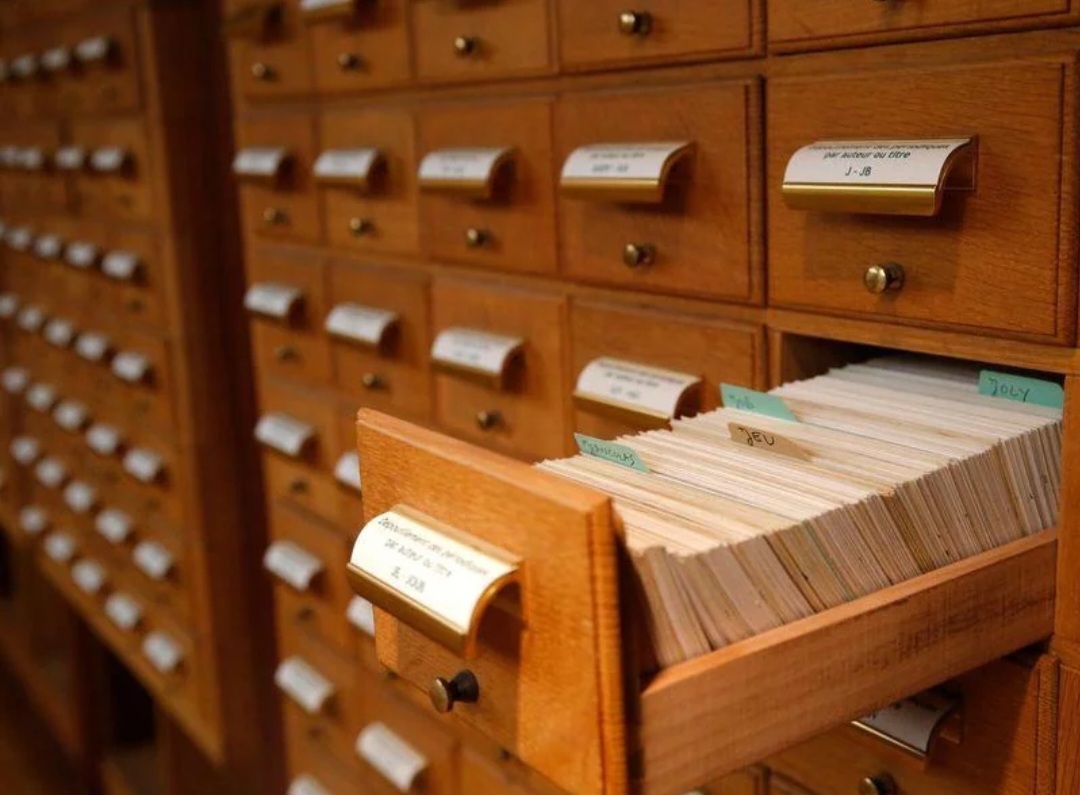
Remembering the Card Catalog: A Journey Through Library Research in the Pre-Digital Age
In an era before the convenience of search engines and digital databases, the library card catalog was a vital tool for anyone seeking knowledge. For students, researchers, or just curious minds, the card catalog represented a gateway to the wealth of information contained within the shelves of a library. Using the card catalog was both an art and a science, requiring patience, persistence, and a good understanding of the Dewey Decimal System.
How to Use a Library to Research
Before the days of digital databases, researching in a library was a hands-on experience. You would start by entering the library and heading straight to the card catalog—a large, often wooden cabinet filled with drawers of index cards. Each card represented a book or resource within the library, and these cards were meticulously organized by title, author, and subject.
The Card Catalog: Your Research Starting Point
To find a book, you would need to search through the drawers under the appropriate heading. If you knew the title or author of the book, you could quickly locate the corresponding card. However, if you were searching by subject, the process could be more time-consuming as you sifted through various entries to find the one most relevant to your needs.
Each card provided crucial information: the title, author, publication date, and most importantly, the book’s location within the library, often indicated by a call number based on the Dewey Decimal System. This system categorized books into ten main classes, ranging from general works (000) to history and geography (900). For example, if you were looking for a book on American history, you might find it under the number 973.
The Effort to Find the Perfect Reference
Once you found the correct card, the next step was to locate the book on the library shelves. This required navigating the library’s aisles using the call number as your guide. The journey to find the book was often filled with anticipation. Would the book hold the information you needed? Would it provide the perfect quote or data point for your paper?
But sometimes, the journey ended in disappointment. Imagine finding the book, only to discover that the specific article or page you needed had been torn out by a previous user. This was a frustrating reality in the pre-digital age, where there was no digital copy to fall back on, and your only option was to start the search anew or seek out another library with the same book
From Card Catalogs to Digital Influence: The Evolution of Data Analysis
The transition from the card catalog system to today’s digital age is a fascinating journey that highlights the drastic changes in how we access, analyze, and utilize information. In the era of the card catalog, users developed a keen sense of organization and attention to detail, which were crucial skills for navigating the physical index cards that represented books in a library. These users would sift through the catalog, carefully analyzing the classification under the Dewey Decimal System to locate books relevant to their research. The process was labor-intensive and required patience, but it built a deep understanding of how information was structured and accessed.
Fast forward 50 years, and those same skills are being adapted to the digital landscape. Today, instead of searching for books, these users are analyzing complex sets of data regarding reach, audience engagement, and the effectiveness of influencers. The ability to dissect the structured data of card catalogs has evolved into an aptitude for interpreting digital analytics and AI-generated insights.
The experience of manually tracking down a book, only to find that the needed article was torn out, mirrors the challenges faced today in verifying the authenticity and alignment of influencer content with a brand’s values. The meticulous nature of those who used the card catalog system translates into a careful selection process in the digital world, where identifying influencers involves not just finding the right content but also ensuring that the influencer’s communication style and tone match the brand’s identity.
In the same way that card catalog users learned to navigate a system to find the exact resource they needed, they can now apply those analytical skills to the digital age. They can filter through vast amounts of data, using AI tools to analyze audience demographics, engagement metrics, and sentiment analysis. These users can play an intricate role in ensuring that a brand’s chosen influencers not only reach the right audience but also resonate authentically with them, maintaining the brand’s integrity.
This transition from physical card catalogs to digital data analysis underscores how foundational skills in research and analysis are timeless, adapting to the tools and needs of each era.
Conclusion: The Value of Patience and Persistence
Looking back, the process of using a card catalog and physically searching for resources in a library taught valuable lessons in patience and persistence. While the digital age has made research more accessible, the skills developed in the pre-digital era—like critical thinking, problem-solving, and the ability to navigate complex systems—remain relevant today.
There is a certain nostalgia attached to the card catalog, the Dewey Decimal System, and the tactile experience of handling books and film in a library. It reminds us of a time when knowledge was something we had to actively seek out, a journey that was as much about the process as it was about the destination.







